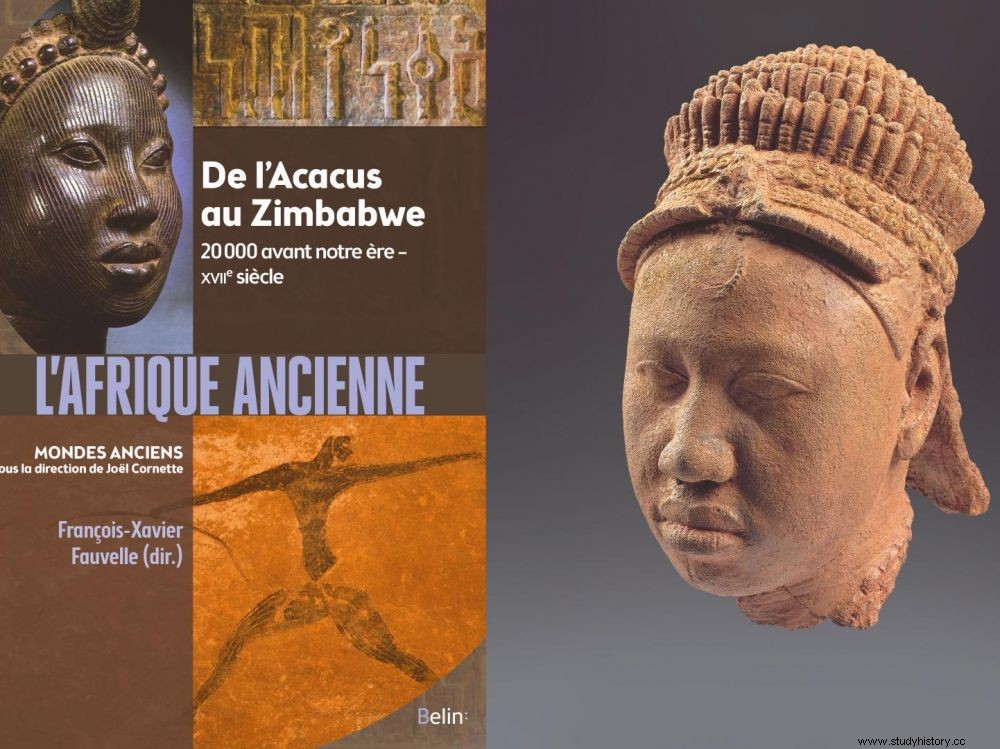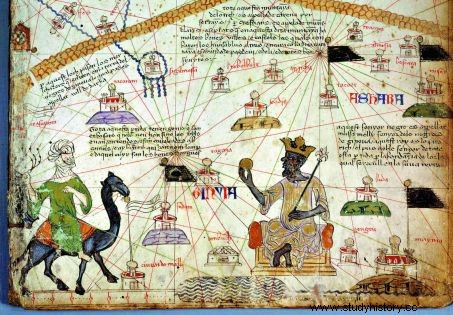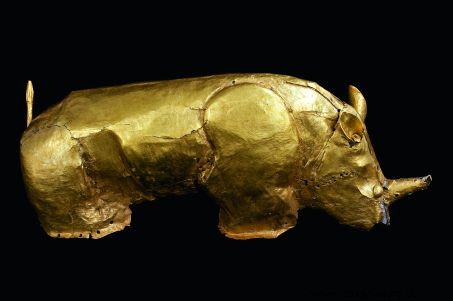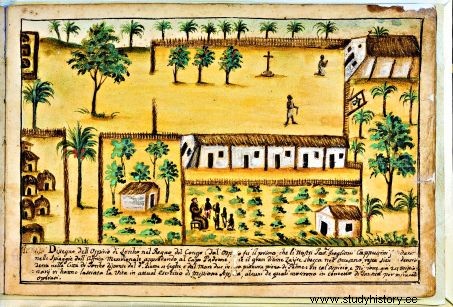On the occasion of the publication of the event book on Ancient Africa , the historian François-Xavier Fauvelle, who directed this collective work, explains the originality of his approach.

Saharan cave paintings and Ifé heads, from Nigeria (14th century).
"The History of Africa is several continents of history" , explains François-Xavier Fauvelle, historian and archaeologist of ancient Africa, director of research at the CNRS. Author of the Golden Rhinoceros ( Alma editions), Grand Prix des Rendez-vous de Blois in 2013, it is under his direction that the book Ancient Africa, from the Acacus to Zimbabwe, 20,000 BC has just been published - 17th century , at Belin (680 pages, 49€). Maintenance.
Science and Future:I l Not long ago, some denied that the African man had made history. How did the idea for this book, which explores the ancient history of Africa, come about?
Francois-Xavier Fauvelle: The starting point is first of all a feeling of lack. Unlike the history of contemporary Africa - richly endowed with publications - we had no reference books on ancient Africa! We also wanted to respond to a thirst for knowledge on the part of the public. Especially after hearing effectively that Africa had no history, no sources to attempt to write it down, and no writing systems! Which is incorrect. In Africa, writing has not been lacking more than history!

Catalan Atlas (1375). The image depicts King Musa of Mali in majesty. © BNF
How did you do it?
We called on 25 contributors, sometimes the only experts in the world in their field! Contrary to what happens for the Mesopotamian or Roman civilizations, for example, we did not have reference tools allowing us to produce a synthesis on the scale of Africa, nor of any of the regions concerned by this book. Each specialist therefore had to gather knowledge that he was often the only one to possess, which enabled us to draw up unpublished maps in particular. Reason why this work took three years, because nothing was obvious.

The Golden Rhinoceros of Mapungubwe, South Africa. Discovered in 1932, on the banks of the Limpopo River, this little rhinoceros in gold leaf laminated on a wooden core, was among thousands of gold beads, and glass paste, local ceramics but also tableware from prestige imported from China. © Department of UP Arts, Mapungubwe Collection.
What did this work entail?
As I point out in the introduction to the book, Africa is a geographical continent, but above all it is several continents of history! Each of them tells different stories and trajectories, but this does not mean that it is a kaleidoscope or a banal collection of fragments. Because all these continents are articulated to each other. And we can trace the history of this Africa in motion! For 20,000 years, it was anchored to other regions of the world, until the 17th century, when we see it tipping over in a new global order linked to the arrival of Europeans.

The provincial capital of Mbanza Soyo, in the Congo Basin. Watercolor made around 1750 by the Capuchin Bernardino d'Asti. © Civic Library of Torino
Why do you say that the ancient history of Africa is sometimes confusing?
In Africa, history did not unfold like elsewhere, where a kind of evolutionary steamroller came to erase the relics of previous vestiges. Like Neolithic societies compared to those of prehistory, metals, major political formations, empires or multiple cultural or production systems. It was not linear, because multiple cultural systems cohabited:it was therefore necessary in this work that we manage to show that populations of nomads, herders of cows or dromedaries, blacksmiths, potters, hunters- gatherers had been able to develop at the same time as the larger, more structured empires. Because African societies have been confronted, much more than others, with a restrictive environment which has been the source of a unique inventiveness. Whether political, technical, religious, linguistic or artistic. And this collective work had to do justice to this diversity exposed over time. While transporting us on the roads which attracted Greek or Arab merchants in the great African capitals, which led the Sahelian pilgrims from Timbuktu to Mecca, or even the Nubian diplomats from Dongola to Baghdad!
